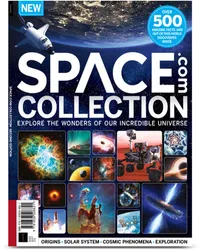Earth is about to lose its second moon, forever
Godspeed, SO 2020. Enjoy your journey around the sun.

Earth's second moon will make a close approach to the planet next week before drifting off into space, never to be seen again.
"What second moon," you ask? Astronomers call it 2020 SO — a small object that dropped into Earth's orbit about halfway between our planet and the moon in September 2020. Temporary satellites like these are known as minimoons, though calling it a moon is a bit deceptive in this case; in December 2020, NASA researchers learned that the object isn't a space rock at all, but rather the remains of a 1960s rocket booster involved in the American Surveyor moon missions.
This non-moon minimoon made its closest approach to Earth on Dec. 1 (the day before NASA identified it as the long-lost booster), but it's coming back for one more victory lap, according to EarthSky.org. Minimoon 2020 SO will make a final close approach to Earth on Tuesday (Feb. 2) at roughly 140,000 miles (220,000 kilometers) from Earth, or 58% of the way between Earth and the moon.
Space.com Collection: $26.99 at Magazines Direct
Get ready to explore the wonders of our incredible universe! The "Space.com Collection" is packed with amazing astronomy, incredible discoveries and the latest missions from space agencies around the world. From distant galaxies to the planets, moons and asteroids of our own solar system, you’ll discover a wealth of facts about the cosmos, and learn about the new technologies, telescopes and rockets in development that will reveal even more of its secrets.
Related: The 15 weirdest galaxies in our universe
The booster will drift away after that, leaving Earth's orbit entirely by March 2021, according to EarthSky. After that, the former minimoon will be just another object orbiting the sun. The Virtual Telescope Project in Rome will host an online farewell to the object on the night of Feb. 1.
NASA learned that the object has made several close approaches to Earth over the decades, even coming relatively near in 1966 — the year that the agency launched its Surveyor 2 lunar probe on the back of a Centaur rocket booster. That gave scientists their first big clue that 2020 SO was man-made; they confirmed it after comparing the object's chemical makeup with that of another rocket booster, which has been in orbit since 1971.
Godspeed, minimoon 2020 SO. We built you. We abandoned you. And now, you abandon us.
Get the world’s most fascinating discoveries delivered straight to your inbox.
Originally published on Live Science.

Brandon is the space / physics editor at Live Science. With more than 20 years of editorial experience, his writing has appeared in The Washington Post, Reader's Digest, CBS.com, the Richard Dawkins Foundation website and other outlets. He holds a bachelor's degree in creative writing from the University of Arizona, with minors in journalism and media arts. His interests include black holes, asteroids and comets, and the search for extraterrestrial life.



